I turned my HiFi system into a very expensive HomePod – but there's a catch
Did it work?
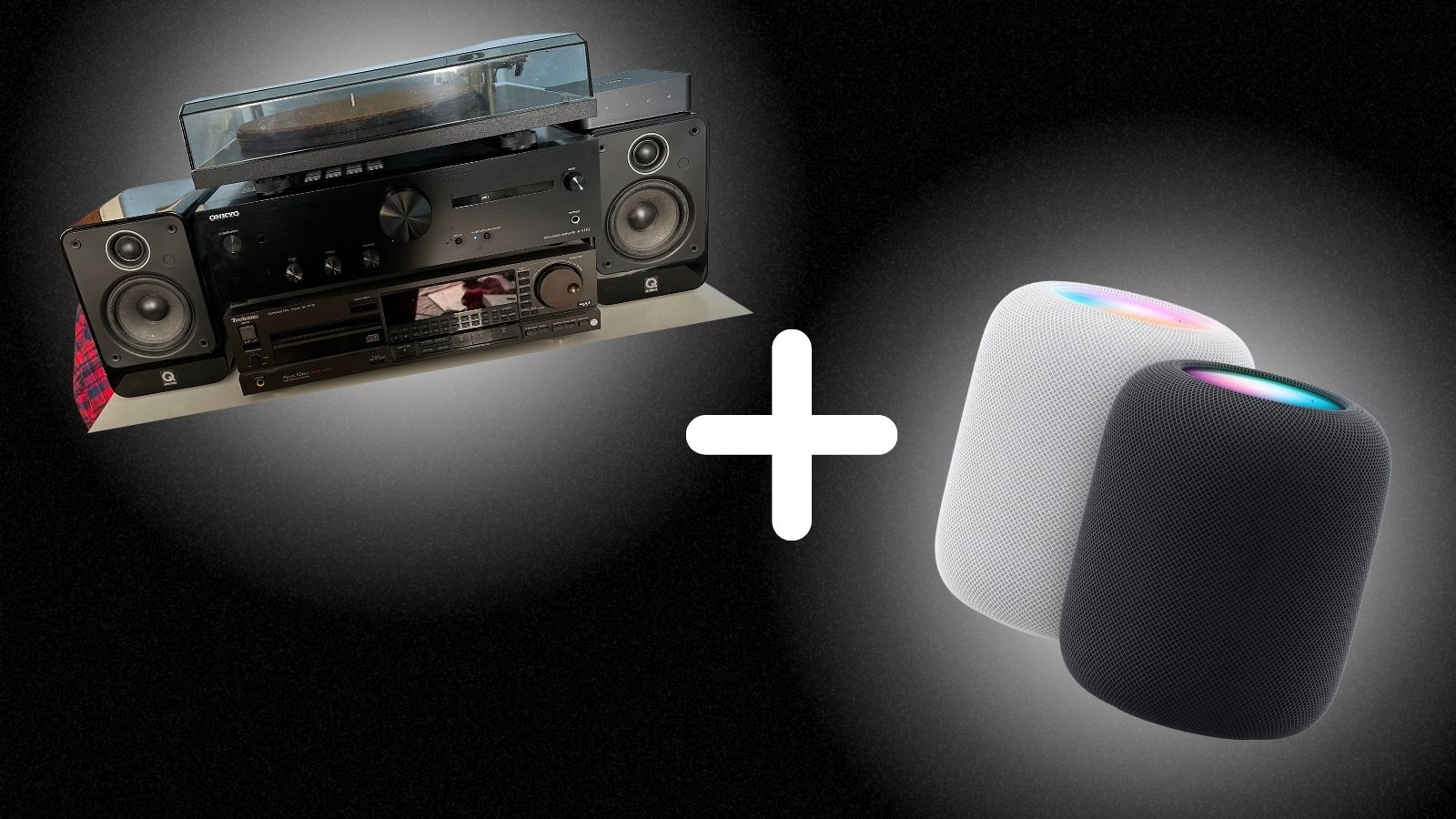
I have a HomePod. In fact, I have two HomePods. A first-generation HomePod that I got from eBay for around $100, and a HomePod Mini that I use in the kitchen for timers and stuff. The HomePod range is something that I think could be very cool. The ability to ask my speaker to play almost any kind of music I like? Wicked. Start timers while I’ve got my hands covered with cake mix? Brilliant.
The issue is that I simply don’t like the way that HomePods sound. In order to make them sound bigger than they are, Apple has accentuated the lower frequencies, making them sound boomy, and in some cases, obnoxious. I love audio, and I want my audio equipment to be top-class – and to my ears, the HomePod simply isn’t. Sorry, Stephen and your HomePod 2 review, so full of praise – I simply cannot agree.

So when I was sent an email about a little box that plugs into my actual HiFi with proper RCA audio connections (and not just a 3.5mm connection), and provides support for AirPlay and apparently, Siri, I went a little barmy. That I might be able to listen to all my favorite music over the internet when I can’t be bothered to spin a record or pull out a CD, and not have to pay for one of those unbelievably expensive streaming boxes that I’ve been eyeing up since I first saw one? Preposterous.
And to get all that for under $150? Sign. Me. Up.
The streaming box
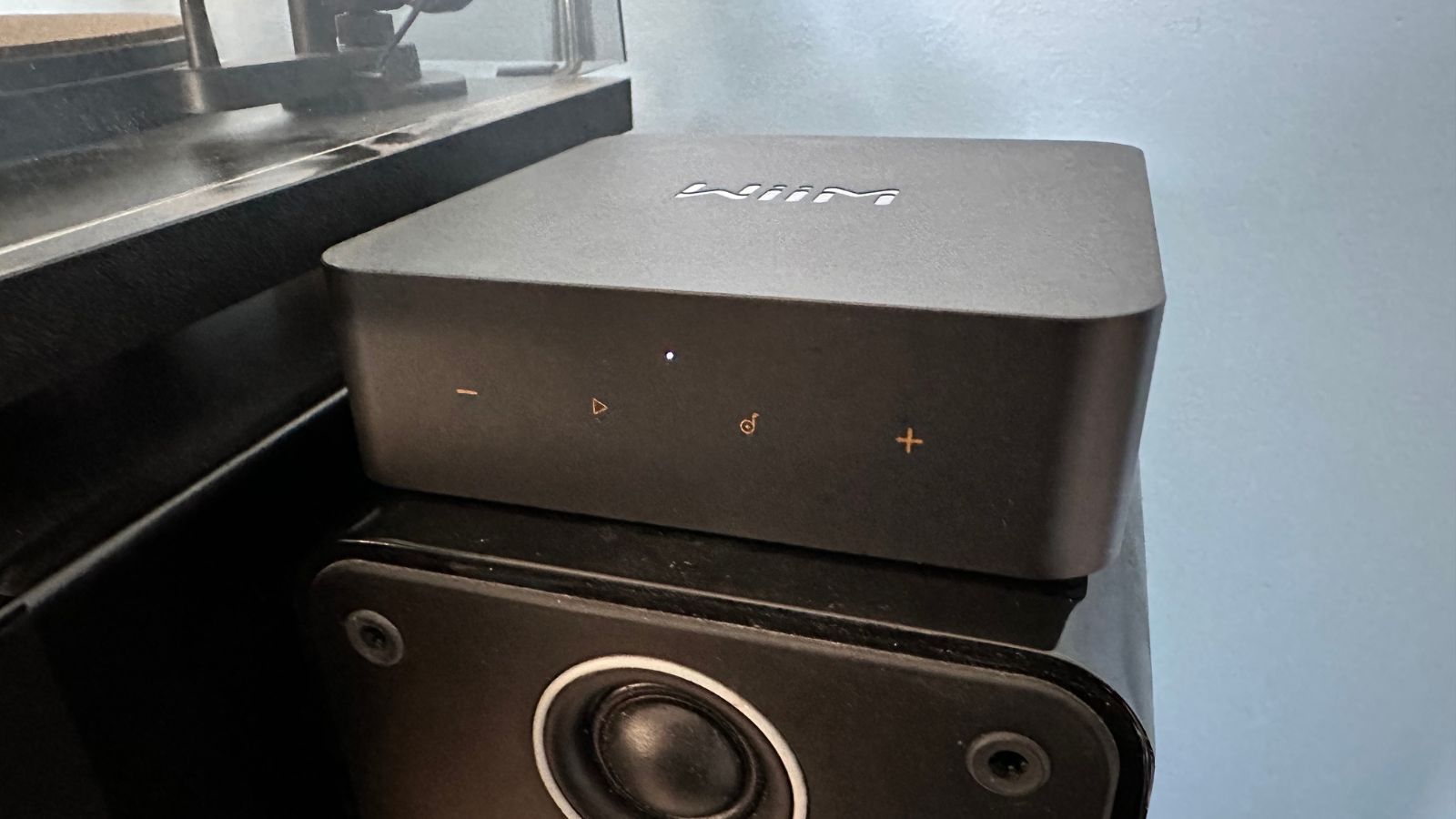
This is the Wiim Pro, and I love it. It’s about the size of a, I don’t know. A small box. But within that box is a pretty potent DAC, and all the WiFi gubbins that you need to listen to your music over the air. It’s got AirPlay streaming support, so I can add it to Apple's Home app, and there’s support for the highest quality tracks from the likes of Tidal and Qobuz. Unfortunately, my favorite streaming platform Roon doesn’t see the Wiim Pro as a high-quality output, but the other audio apps I use do.
It’s about as plug-and-play as they come. There are all the leads you need in the box, and you just plug in the RCA plugs in the back and then connect to it with the Wiim Pro app on your iPhone. It’s seamless and simple, and I was listening to my tunes in seconds. “This is going to be great,” I thought. “I’ll be able to use my Hifi system like a HomePod,” I thought.
“I’ll be able to use my HiFi system like a HomePod,” I thought.
iMore offers spot-on advice and guidance from our team of experts, with decades of Apple device experience to lean on. Learn more with iMore!
The HiFi
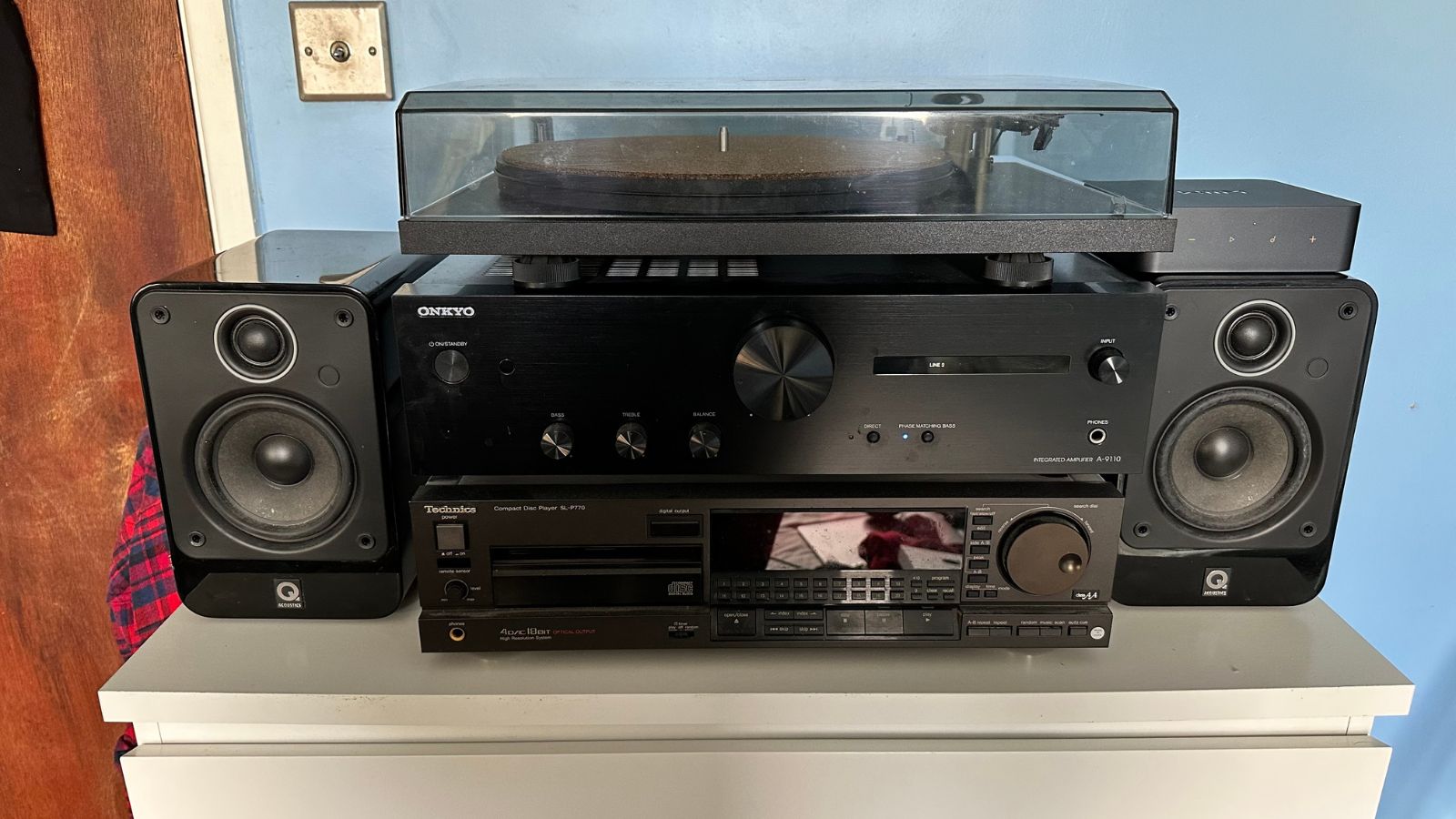
This is my Hifi system. Compared to the amount you can spend on HiFi, mine is but a drop in the ocean. All in, with second-hand speakers and a turntable, my HiFi system has cost me around £500. That’s around $610 for you guys across the pond, which, while cheap for a HiFi system, is still a lot of money.
It consists of a pair of QAcoustics 2010i speakers, an amp by Onkyo, a Pro-ject turntable, and a technics CD player from the eighties. It’s not the best nor the prettiest HiFi system, but it’s mine, and crucially, it sounds a whole lot better than a HomePod. It also goes louder if that’s important to you. (it is to me).
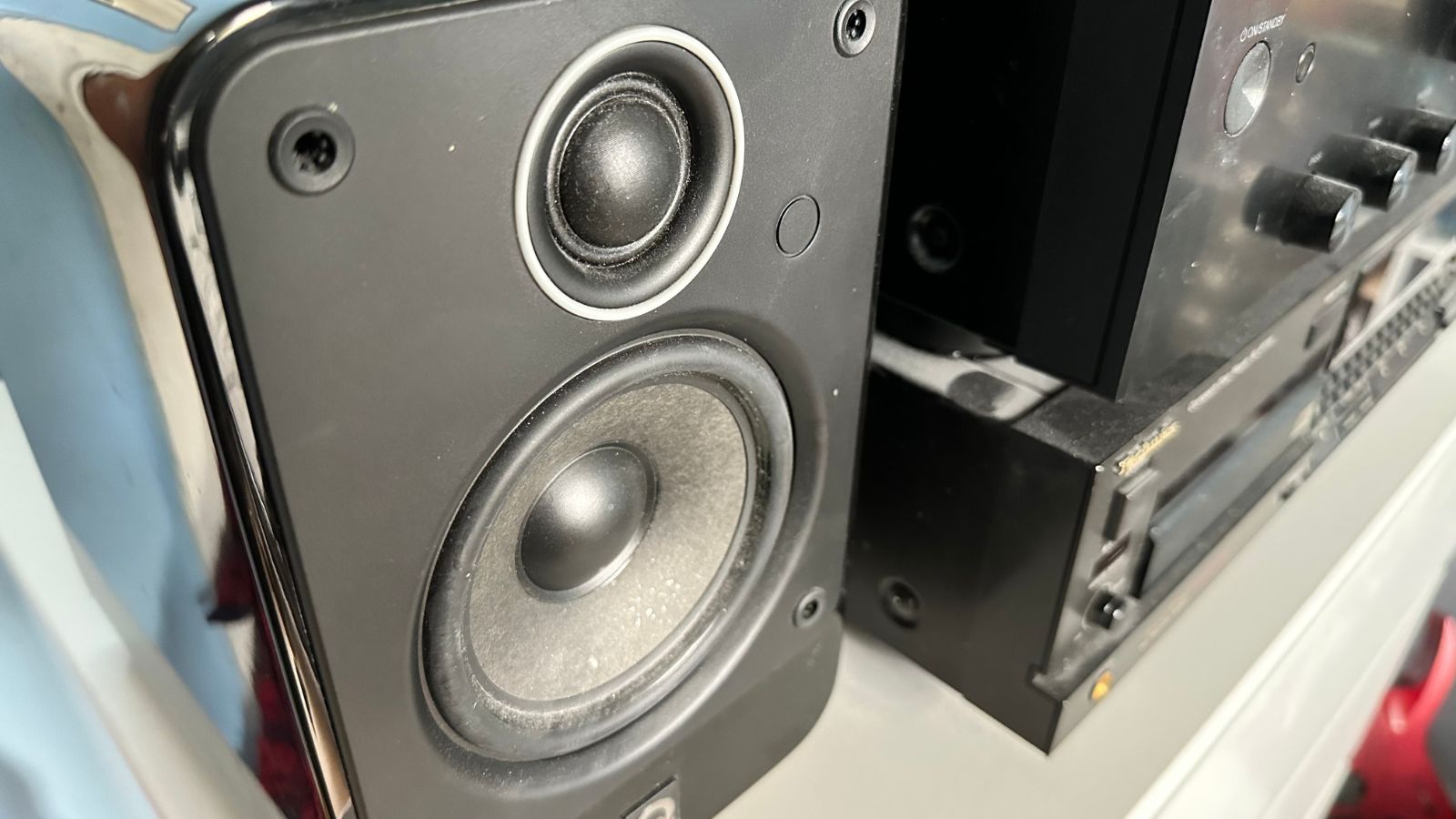
There’s a richer lower frequency response that while not more than the HomePod, is a much nicer listen. The drivers in my speakers have more room to breathe, so the soundstage is more impressive. It’s also actual stereo, rather than software-based, so it’s more balanced as well. It’s flatter in its sound profile, and a lot more dynamic when it needs to be. No, it’s not going to fit on a shelf, but it’s going to make your music sound better than a HomePod could ever muster.
This is what I plugged my Wiim Pro into. This is the HiFi system that I shall make into a HomePod all of my own design. Little did I know that it would be my undoing.
Triumph and defeat
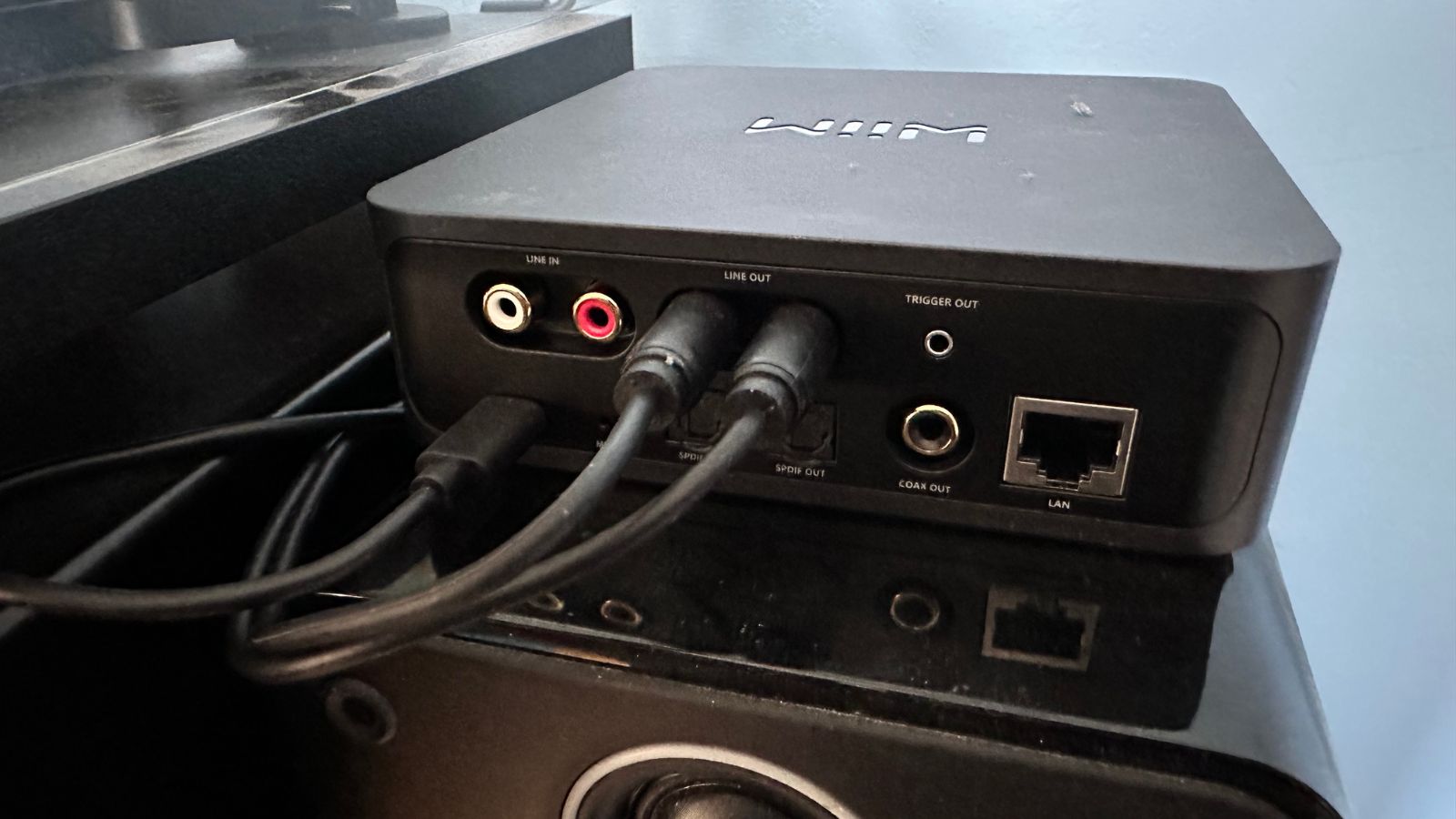
Once everything was plugged in and ready to go, I got started. “Hey Siri, play All Hail the New Flesh on Qobuz,” a command I have barked at both HomePods many a time, only this time hoping for a more dynamic audio experience.
Instead, the HomePod by my bed woke up, and Devin Townsend and Strapping Young Lad burst out. “All Hail the New Fleeeeeeeeeeesh” Devin shouts at me – from the wrong speaker. So I try again. I move the HomePod from my bedside to another room in an effort to try and get Strapping Young Lad to play from my HiFi, and I ask once more: “Hey Siri, Play All Hail the New Flesh On Qobuz.” This time, nothing. So I try my last resort – the manual.
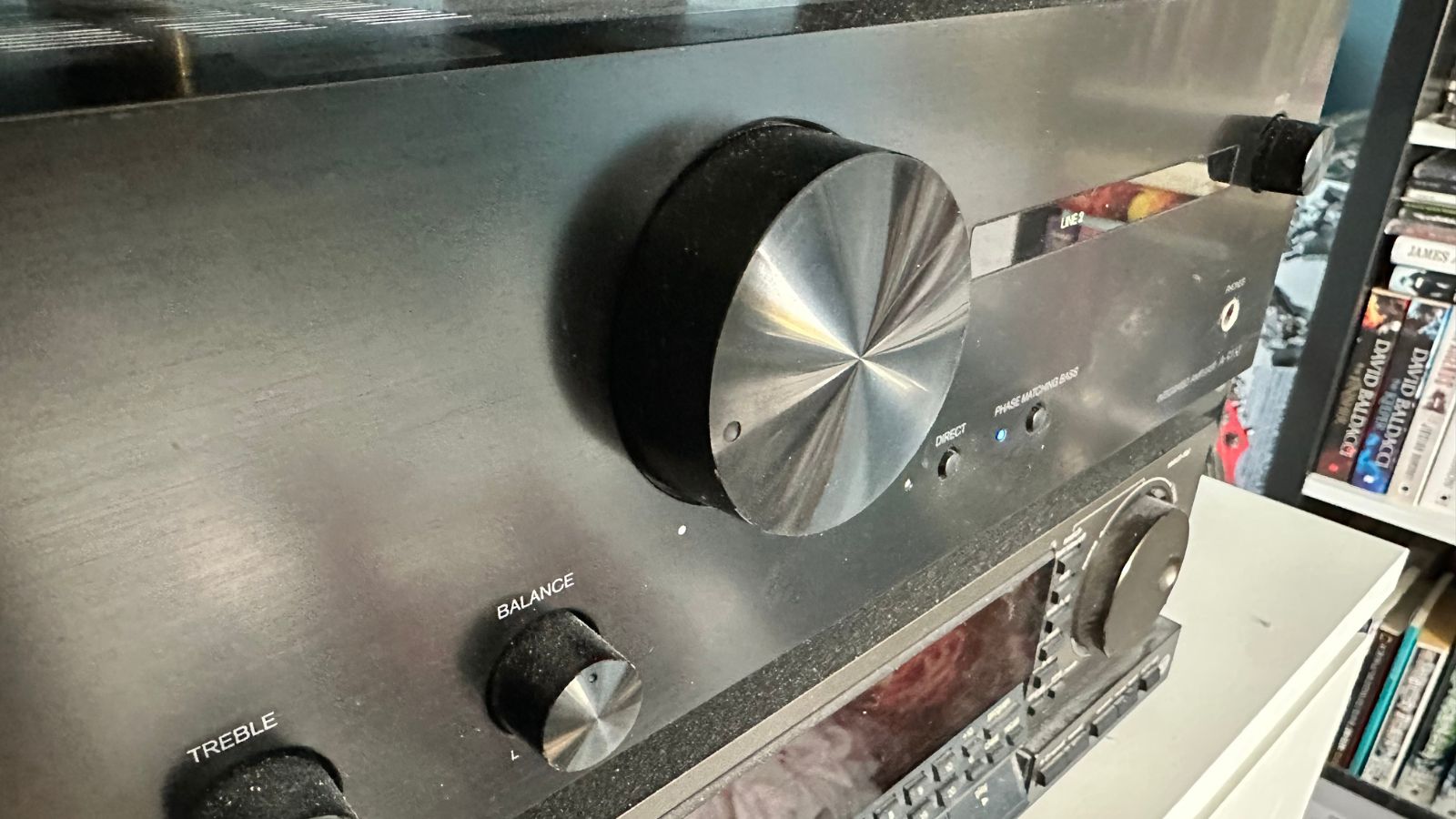
Usually, I am a big manual reader. I find flicking through the pages makes me more excited about the new thing I’ve got, and it also prepares me for things that might go wrong. Not this time, however. I threw the manual out of the way, too excited to play with that which would make my HiFi more connected. I had neglected to read ahead, and I had made of myself, a fool.
See, the Wiim Pro has not added Siri to my speaker system. I can control it through Siri on a HomePod after adding it to Apple Home and giving it a name like ‘Not a HomePod’, but I cannot tell it what to do itself.
See, the Wiim Pro has not added Siri to my speaker system. I can control it through Siri on a HomePod after adding it to Apple Home and giving it a name like ‘Not a HomePod’, but I cannot tell it what to do itself. Instead, I have to speak to a connected HomePod and tell it to play something over the device. A command is now: “Hey Siri, Play all Hail the New Flesh on Qobuz on my bedroom speaker.”
This, of course, is not what I wanted. My HiFi is not a giant, expensive HomePod at all, but an Apple Home-connected speaker.
It’s not a problem, however
At first, I thought it was. This is not the seamless integration I wanted. I can’t ask Siri to play a song directly from my HiFi, and eliminate the need for a HomePod to be near me when I want to listen to music. What I wanted is not what I got, but now that I’ve had a chance to play around a little more with what I do have, I’ve come to really not mind.
The device at the center of it all is just wonderful. It stays on all the time and lets me play music from my devices with a word to my nearby HomePod or a tap on my iPhone screen. The Wiim Pro has excellent audio support, and I have absolutely no gripes with the quality of sound that it pumps into my HiFi. It’s better than the Bluetooth dongle I’d used for years, anyway.
If you buy multiple, you can hook them up to different sound systems and connect them all to one, unified network in Apple Home. The Wiim Pro is an excellent device, one that does the same job as other devices that cost upwards of a thousand dollars, and it does it for $150. The fact that it doesn't do what I want it to is not the fault of the Wiim Pro – It’s me. Hi. I’m the problem, it’s me.
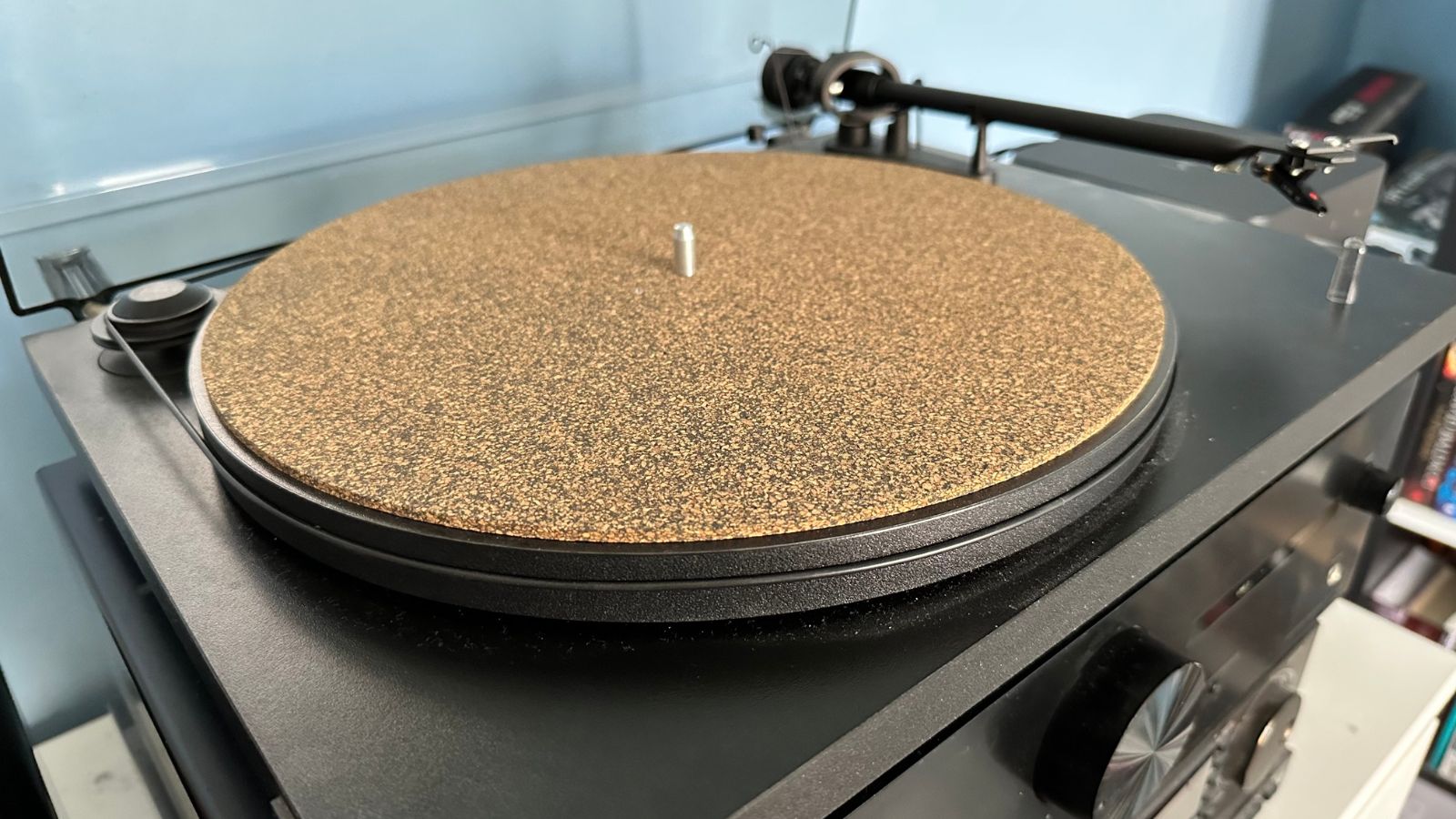
I was expecting something from the little box that it simply can’t do, and now that I have come to terms with that I love it. I like being able to ask my HomePod to play something on my HiFi, as long as I remember to ask for it on the bedroom speaker. It’s not what I wanted, no, but it’s so, so close.
I think it also highlights that there is still room in the audio space for reasonably affordable Hifi systems. Amps, speakers, turntables, and other components don’t go out of date. My speakers are eleven years old now, and the only reason I’d want to replace them is to get something bigger and louder. Audio equipment lasts far longer than the two or three-year upgrade cycles that tech companies want you to be taking part in. A modular HiFi system can last forever – my Dad’s HiFi speakers from 1985 are still going strong, and even when powered by a raspberry Pi DAC and amp, they still sound excellent.
The fact that I can make my HiFi smarter only makes me love my HiFi system more.
The Wiim Pro is available for $150 from Amazon now.

As iMore's Senior Staff writer, Tammy uses her background in audio and Masters in screenwriting to pen engaging product reviews and informative buying guides. The resident audiophile (or audio weirdo), she's got an eye for detail and a love of top-quality sound. Apple is her bread and butter, with attention on HomeKit and Apple iPhone and Mac hardware. You won't find her far away from a keyboard even outside of working at iMore – in her spare time, she spends her free time writing feature-length and TV screenplays. Also known to enjoy driving digital cars around virtual circuits, to varying degrees of success. Just don't ask her about AirPods Max - you probably won't like her answer.
